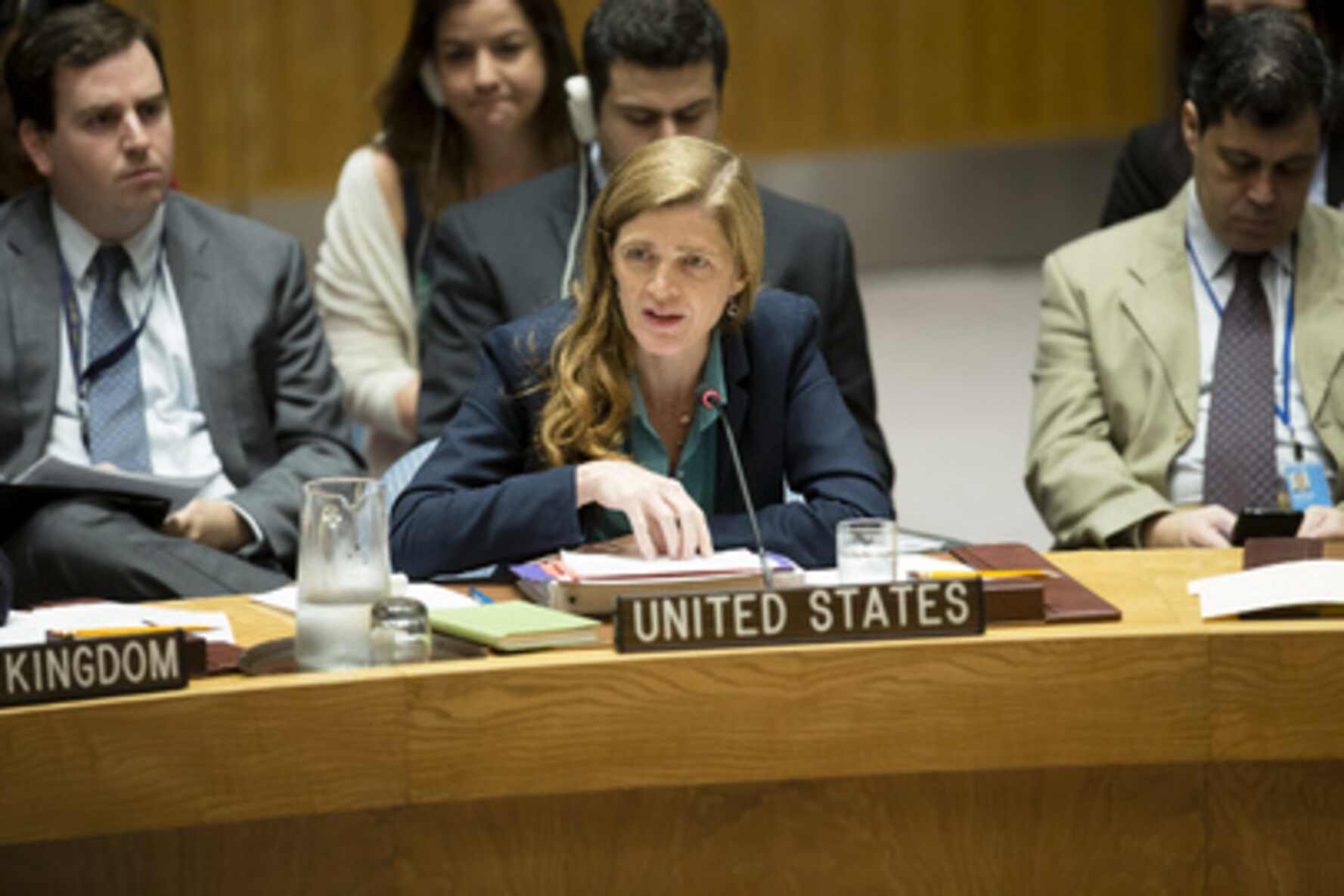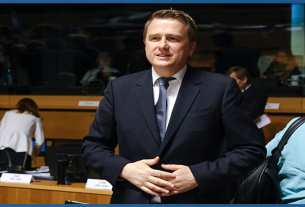For Immediate Release
April 16, 2024
Arlington, Virginia
ADMINISTRATOR SAMANTHA POWER: Thank you. I told LeAnna [Marr] before this, she may have gotten through her remarks okay, but none of the rest of us did. Just always so much heart and soul, and so humble, and reflective of the work of others when LeAnna, herself, is such an incredible leader. I’m going to come back to that happy topic. I also want to thank the [Malawian] Minister of Education Madalitso Kambauwa Wirima, who has been an absolutely standout leader in prioritizing foundational learning in Malawi schools.
And of course, I want to join LeAnna in remembering and honoring Sarah Crites, a friend to so many here. A dedicated public servant for more than 25 years. She worked to improve the lives of children in Zambia, in Ghana, in Mozambique, and so far beyond. So I know that there is a big cloud hanging over us here this week, but what a life, what a life. How many lives did Sarah touch with her work, with her passion, with her vibrancy and dedication. We’re incredibly lucky that she walked among us, that she did the work that she did. So let’s have a moment of silence and remember Sarah.
Thank you all.
LeAnna – so, I am the Administrator of USAID, apparently, but the word that LeAnna was considering retiring did not come to me in the decision-making, there was no action memo to approve of this well-deserved calamity. LeAnna has given 25 years of extraordinary service to USAID. For me personally, and this is true even before I came to the Agency – education and LeAnna, education in USAID and the words LeAnna Marr, were basically synonymous. And so much of the progress that we will celebrate, recognize today, so many of the ambitions and progress as yet unmet, come from this single individual who chose to dedicate her career to this work. So, LeAnna, just thank you, thank you, thank you. I learned so much from you. Thank you.
I’m not quite done. But I just wanted to share one very telling story about LeAnna, and I suspect this will resonate at your tables, each of you will have many more to share with one another. But once, when LeAnna began an assignment in Juba, South Sudan. As soon as she got off the plane, the team that greeted her started to notice some kind of curious things. She had with her a suitcase. That wasn’t so curious. But it was small and really heavy, it’s really strange. People were asking “what’s going on in LeAnna’s suitcase?” She also had a strange question for them upon arriving at her destination. Not “hey, where can I freshen up?” Or “can I take a quick nap,” or “take me to the nearest classroom.” No, “could someone please help me preheat the oven to 500 degrees?” It turns out what she had taken were – across the world – were prepared ingredients in her suitcase because she wanted to make her team one of her famous home cooked pizzas.
And that says a lot about LeAnna. Someone who understands the importance of nurturing her team members and, of course, all that in the service of bringing the best team onto the field because she keeps the children who deserve an education top of mind. So thank you again, LeAnna. No one is going to stand – no one has stood in your way of getting optimal education outcomes. Not a global pandemic, not historic levels of conflict, not TSA’s liquid limits. LeAnna Marr has found a way.
So it really has just actually come to my attention that this is the first gathering like this in eight years. I feel like I can feel the energy and the overdue, kind of, buzz in the room that this is really, really important. There’s so much learning, as we know, that can only happen in person, even if we’ve all learned to be good virtual collaborators. Again, like this is really special, and I hope you all can savor it and take a lot from one another.
I’m personally thrilled to have a small role in helping launch the new U.S. Strategy on International Basic Education, because over the last five years, it is safe to say we have done a whole lot of learning about learning. It is striking to go back, as I did over the weekend, and look at the strategy released back in 2018 for 2019 to 2023, and to see how severe this – is going to sound really quaint – but how severe the challenges seemed then in 2018. And that was well before we had any idea what was in store for the world’s kids, and teachers, and parents, and people.
The 2018 document, some of you know have rehearsed it to memory, but has in it, of course, the stark declaration, the stark finding, quote: “There is a global learning crisis.” End quote. There were a lot of compounding factors that gave rise to that conclusion. Of course, the youth population was expanding rapidly, reaching historic highs and compounding classroom overcrowding. But – and a number of other factors, but the upshot of it was – and LeAnna and I, when I first got into my job had a big back and forth on this fact because I actually just couldn’t believe it. The upshot then was that just 56 percent of 10 year olds in low- and middle- income countries were able to read a simple text. The strategy recognized that meeting that challenge was going to require a Herculean effort. But then came the global pandemic on top of all of that.
And along with that came a precipitous spike in climate driven disasters that disrupted schools and displaced communities around the world, followed by a huge uptick in conflict, including really significant large-scale conflict, like that in Ukraine, Sudan, Gaza. So it was already a global learning crisis, and then just think of what the last five or six years have ushered in.
Now, what we saw, though, as education systems and as learners got battered by these countervailing headwinds was extraordinary work by the people here. In the pandemic, of course, rushing to pivot entire educational systems nearly overnight, finding new ways to engage kids despite barriers and helping education be the constant – the constant that kept kids safe, healthy and growing through incredibly difficult times.
All told, over the past five years, U.S. international education programs trained nearly 3 million teachers and educators and supplied 176 million textbooks and learning materials. And now, U.S. government programs, thanks to all of you, are reaching more learners than before the pandemic, benefiting over 41 million children and youth in 2023 alone.
Now, in the process of that – and that’s a huge achievement. Again, when you think about all you’re up against and how much each of those learning materials can mean to a young person, how much each of those teachers have meant to us in our lives, our teachers, and giving that, providing those opportunities to young people around the world is so critical. But in the process of doing that great work, we have learned new tools to teach hard to reach kids and make education systems more resilient and more inclusive. We’ve learned some essential steps we need to take to create the safe and healthy environments kids need to flourish. And we have learned that given the scale of the needs we face – and this is a reaffirmation, of course, of something we knew – but we have learned progress is going to rely on partners around the world collaborating closely, sharing learnings, and building on each other’s efforts.
So summing up three of the many learnings I’m sure that you all have experienced, but three big ones: resilience, health and safety, and of course, collaboration. And today I’d like to touch on all three of these learnings and how they’re going to guide our next five years of action.
So first, the work you have done to help kids learn through the crises of the past five years has helped to create a new suite of tools to engage hard to reach kids and create what you might call learning resilience. I know resilience is a watchword in so many developing sectors now, but how critical it is in this one.
And just look again at what you accomplished during the pandemic. When our teams in Nepal saw that kids in virtual learning environments didn’t have the books and resources at home that could help them learn, they put together an app where students could access hundreds of digital supplemental reading books and audio stories catered to different skill levels that students could progress through as part of their home studies. When Guatemala moved its school system online, USAID worked with the Ministry of Education to help millions of kids transition to a virtual learning platform, while USDA worked to distribute over 200 metric tons of food to parents so that children continued to benefit from daily nutritious meals while schools were closed.
These solutions, of course, were not a panacea in the face of enormous obstacles to learning created by the pandemic, but many did make a meaningful difference. During the past five years, the number of ten year olds in low- and middle- income countries who can’t reach – who can’t read, excuse me – a single simple sentence increased from 56 percent to 70 percent. But 15 countries where USAID worked with the government to strengthen their education systems during the pandemic, including Nepal and Guatemala, which I just mentioned, bucked that trend. These nations actually increased the number of children obtaining foundational reading skills and meeting country benchmarks, continuing progress even with the world in crisis.
We’ve also learned more about designing schools that will be resilient to the changing climate and accessible to all. In Malawi, for example. USAID worked with a female engineer, Malawian, to design a school that incorporates best practices in sustainable construction to keep classrooms cooler in high temperatures. She also designed ramps and specialized washrooms so that school is accessible to kids in wheelchairs. All told, the past five years have demanded that we try out a number of different solutions to make education systems more resilient and more inclusive.
So as part of our new strategy, we will work with our new Office of the Chief Economist and his team to use rigorous evidence to determine which of these solutions works best. Which is the most cost effective? If you have a dollar, where should you put that dollar, given again, the height of the learning crisis, and the knowledge that we are accruing the capacity to iterate that that knowledge gives us? How do we scale the cost effective solutions, the so-called best buys, to better engage students who are hard to reach, either because their education has been disrupted by crises or because their gender or disability risks interfering with their education.
Already, we’re getting off to a good start. Last year, in the wake of the pandemic, as girls were disproportionately kept out of the classroom, USAID committed to reach 15 million girls and young women globally with education assistance. I am glad, here, to announce that we not only met that goal, but exceeded our commitment. 18 million girls and women were reached in 2023, FY 2023 alone. Thank you. That’s your great work enshrined in the single statistic.
Second, we have also continued to learn really important lessons about what we need to create the safe and healthy environments that kids need in order to be ready or even able to learn in the first place, from good nutrition to sanitary products. In recent years, we have learned, thanks in part to LeAnna, who has been championing this for many, many years, the essential importance of getting lead out of the environment so it stops interfering with children’s cognitive development. This has become – thanks to LeAnna and her leadership, one of my most important priorities as USAID Administrator. So just as a little lead diversion here, because it is so important.
The magnitude of the global lead crisis is truly shocking. The magnitude of the paucity of understanding of that crisis, arguably, is even more shocking. This is – what we’re about to talk about is not broadly understood. Those of us who are American will never forget the horrific lead poisoning crisis in Flint, Michigan. At the height of the crisis, a shocking 1 in 20 kids had elevated levels of lead in their blood. In low and middle income countries, where so many of you work, 1 in 2 kids suffers from lead poisoning – has elevated levels of lead in their blood. 1 in 20 in Flint, which was horrific – 1 in 2.
The damage that lead is causing to children’s brains may account for 20 percent of the education gap between high and low income countries, unnecessarily limiting their potential and their contributions and their futures, also limiting the impact of the programs that you all have put in place to support these young people. Globally, lead is killing 1.6 million people every year, more than HIV/AIDS and malaria combined. And often that lead is ingested, taken into this – the blood system, and later to the bones, by people at their absolute youngest in a classroom, taking cookware in a cafeteria, giving up a toy and then touching one’s mouth having touched a toy that, itself, was doused in lead laden paint.
Despite these staggering human costs, donors have been spending only $15 million every year to combat global lead poisoning, 1.6 million people killed each year, more than HIV and malaria combined, $15 million global spend so far.
We’re changing that now. This year, USDA’s call for proposals for school feeding programs will specifically seek out programs that identify and prevent lead exposure through potential sources like cookware and spices, so that children won’t be harmed in the very places that should be helping them grow. And we are creating a coalition for action to phase out lead from the consumer products still contaminating families around the world, from paint to cosmetics.
So far this year, we have announced $4 million toward these efforts, and we are mobilizing philanthropies to direct many multiples of that and many multiples of the current level of $15 million annually, to finally give the crisis, not only the attention it deserves, but to be able to inject the resources in a playbook that is fairly straightforward about how, together, we can prevent lead poisoning and get lead out of societies so as to optimize educational learning outcomes. Thank you, LeAnna, for your leadership on this.
Third, and finally, we have, of course, learned that the scale of the challenge we face demands collaboration. We need local leadership to create education systems specifically designed to meet the needs of the students they serve, tailored, customized. At the same time, in this era of rapid learning about learning, we need global knowledge and resources to share best practices and keep building on what works. So for the first time ever, this strategy includes a specific objective to increase coordination, listening closely to our partner countries and boosting our collaboration with agencies across the U.S. government and with multilateral organizations to help our partners on the ground meet their priority leads in the most effective ways possible. We will use our global leadership and convening power to drive progress on key issues.
For example, to spur action to address the sharp increase since the pandemic and the number of children failing to develop those foundational skills, First Lady, Dr. Jill Biden announced the United States endorsement of the commitment to action on the foundational learning back in 2022. Since then, 29 countries and more than 30 leading multilateral and partner organizations have signed on, committing to take a series of steps aiming to cut the share of children who are unable to read simple text in half by 2030. So cutting the share of kids who can’t read a single sentence – cut that in half by 2030.
We will keep coordinating with partners across our government and around the world to keep sharing lessons learned, make sure we have state of the art data to know, again, with our limited resources, where best to apply them. We are getting started right at this conference. Next on our agenda is a panel with interagency partners. I’m so grateful to each of them for being here and taking so much time out of their days to share with us how we can better work together across our own government in service of this new, important strategy.
Before I turn it over to them, I want to say that I know the last five years have been – choose your adjective. Fill in the blank. Exhausting, draining, at times demoralizing. But your work is helping educate the world’s kids, even when a lot is coming at them. A lot more even than in generations past. And your work is going to have consequences that reverberate for generations into the future.
This hit home for me recently on a trip to Ukraine when I visited a school that had been converted into a bomb shelter. Its windows had been blown out by the force of Putin’s missile attacks. And when I visited rooms that should have been filled with kids learning were empty with children’s artwork from before still on the walls. But instead of hearing that incredible, irreplaceable, unrivaled sound of kids in a school, in the halls there was just silence. It was really chilling. But despite everything, the school was reopening in two weeks. The school director was working day and night to get ready for the students’ return because she knew that while the battle for Ukraine’s present was being fought on the battlefield, much of the battle for its future was going to be determined by what happened at schools like hers.
I don’t have to tell this group the statistics. For every year of school, health outcomes improve, chance of being involved in conflict declines, incomes, of course, go up. But this woman, this teacher was not going to let Putin’s invasion rob a generation of Ukrainian kids of their potential. And that is the determination we see in all of you all around the world, again, in the face now of some really, really challenging, headwinds.
I have seen people go to extraordinary lengths to keep kids learning, pouring their hope for a better future into educating and nurturing those who are going to go on and shape that future. So from the bottom of my heart, just thank you. Thank you so much for everything you do to support those heroic efforts out there in the world.



